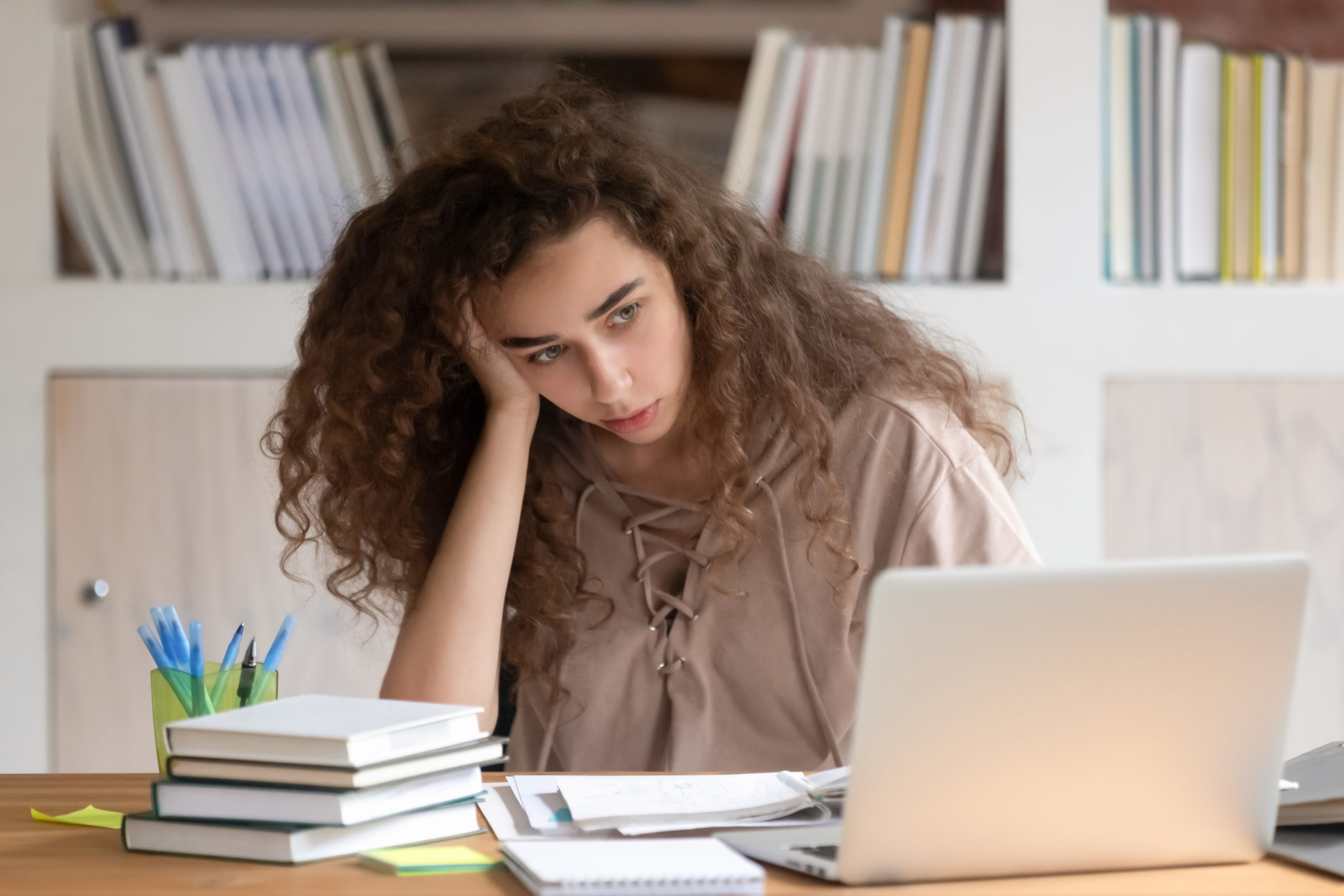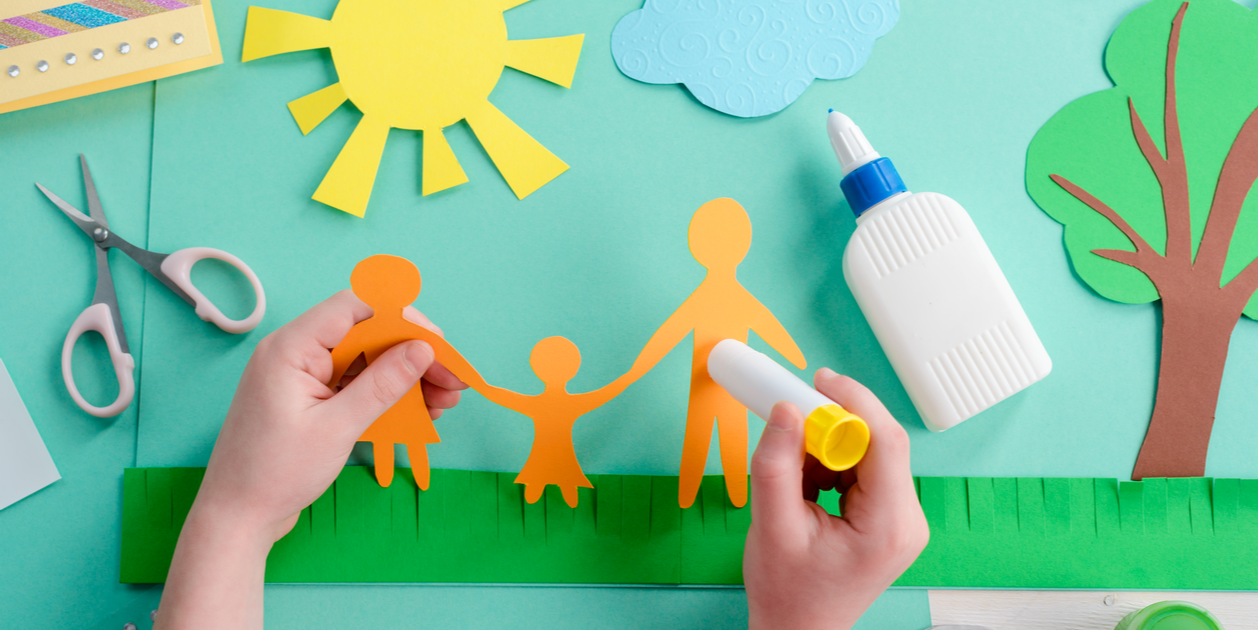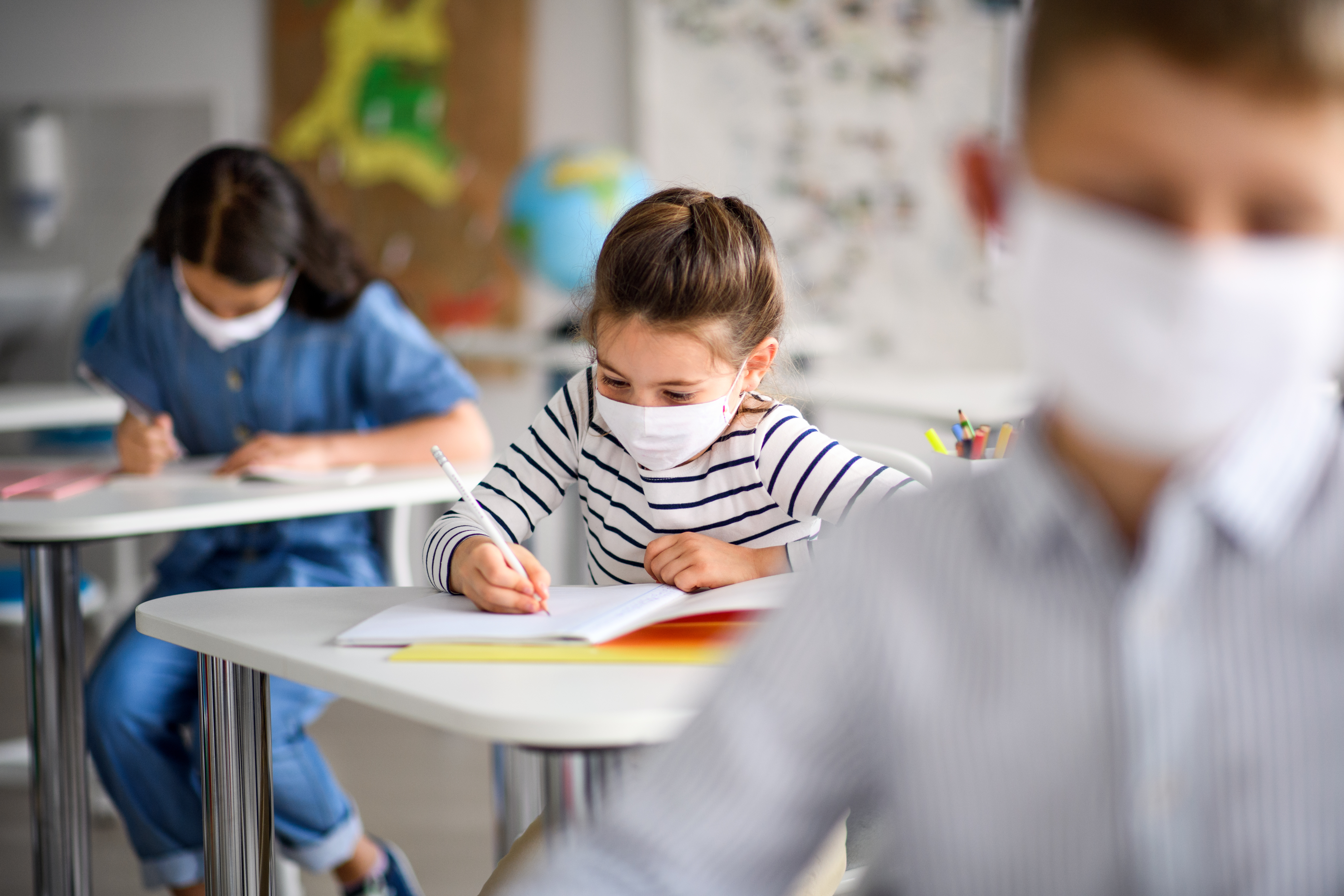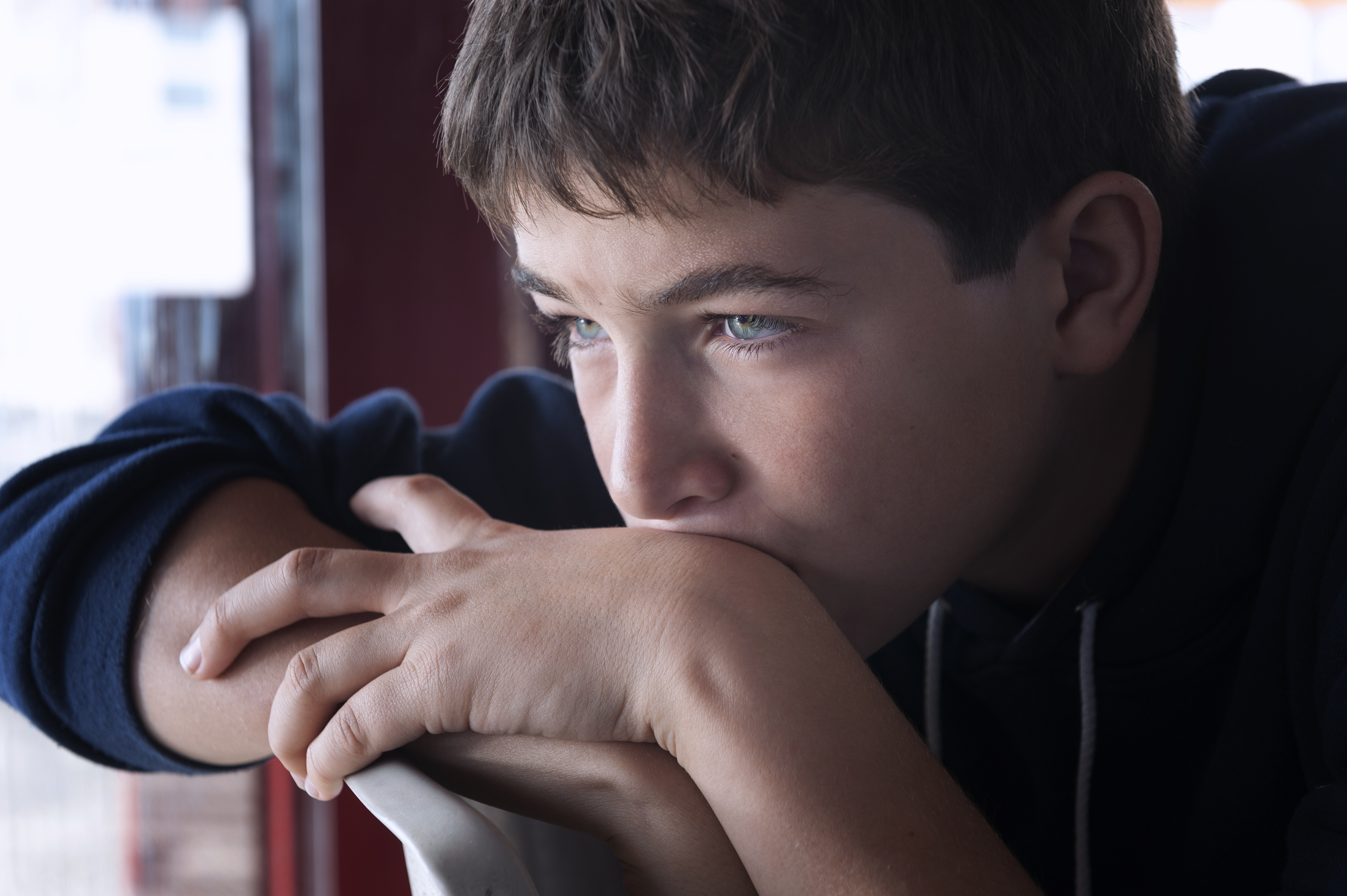Grounding activities to help support yourself and your students in times of stress
by Cara Lorrimer on May 20, 2021

What are grounding activities?
When a child starts to feel overwhelming emotions, grounding activities can be a powerful tool to connect with the here-and-now, so they don’t get swept away by the waves of intense feelings. How often have you or a student reacted to a strong emotion this year, without space for thought? Snapped at a loved one? Had a temper tantrum? We call this state hyper-arousal. Or wanted to hide away under the covers? Or felt empty and numb? This is hypo-arousal.
The clients whom I’ve shared grounding strategies with have said that they feel more equipped to cope in these times. I’d like to share with you some of these tried and tested techniques, which may be useful if you notice a student having difficulties in the classroom. Hopefully, they’ll provide you with strategies for when they are feeling overwhelmed by strong emotions or sensations such as panic, fear, anger, sadness and grief. Remember, that you too, can use them for yourself in stressful moments.

Recognising early warning signs
Before we begin with the grounding activities, we’ll discuss how to spot the early signs that these strategies might be needed. Helping your student to recognise the early warning signs of when they might be about to be swept away in a strong emotion can be useful, so they learn to act rather than react. In online sessions, I will guide the children and young people I work with in recognising the early warning signs so they can decide to ground themselves when needed. Here is how you can help identify if they are having an emotional response in the classroom:
- Ask or notice - does it start with a bodily sensation? A tightness in the shoulders, neck, chest or stomach? Heart beating fast, shallow breath, tightening of the fists, tingling in the legs or cloudy or achy in your head? What about a triggering thought? A worry about something in the future or regret from the past? A comparison to another? And what about how we react to other people’s behaviour, like when a family member or friend is rude to you?
- Reflect - could your student be ‘disassociating’? Disassociation is a learned coping mechanism and response to trauma and stress, which may explain why some have turned to ways of detaching from what is going on in the world, for example, spending a large proportion of time zoning out on a mobile phone or device. Disassociation is a way of disconnecting from yourself and the world around you. You might feel empty, numb or like the world around you is unreal. It’s just one way the mind copes with too much stress or a traumatic experience, such as a global pandemic.
Awareness of these early signs is key to understanding when to take a moment or two to engage in a grounding activity.

Eight simple grounding activities
When an emotion gets too intense and overwhelming, we need to move away from the emotion and bring our focus back to our thoughts or our bodies and our environment. In my creative arts therapy sessions with children and young people, we often engage in simple and practical grounding activities they can then utilise wherever and whenever they need. If you recognise your student is having an overwhelming emotional reaction, here are some of my top grounding activities to try:
1. Breathwork
Imagine your belly is a balloon. What colour might it be? Place your hand on your abdomen. Slowly breath in. Trace your breath as it enters your nose, goes down the back of your throat, into your lungs and then into your belly. Notice the balloon gently expanding. Pause. Trace your breath back through your lungs, your throat and exhale through your mouth. The pause between your breaths can help regulate your heartbeat, when you are conscious that it’s beating fast.
2. Here and now (5,4,3,2,1)
This is another simple practice that can be done anywhere. It is an activity to engage all the senses in the present moment.
Can you name:
-
5 things you can see
-
4 things you can touch
-
3 things you can hear
-
2 that you can smell
-
1 you can taste
The purpose of this is to move away from those unhelpful thoughts and anxieties and bring yourself back into your body, to the here-and-now and your environment. This can be especially helpful for disassociation as it helps to directly connect with the world around you.
3. A calm, safe space
This is another multi-sensory activity. In sessions, I may invite the child or young person to draw this, as it can help them visualise all the details and use the visual whenever they choose.
Imagine somewhere where you feel safe, secure and a deep sense of calm. This may be a place that’s familiar, that you have visited before, or somewhere imaginary or from fiction or a dream. You position yourself so that you are comfortable.
What do you notice around you? What can you see? What does the surface beneath you feel like - is it cold, warm, soft or firm? You feel your breath softening and your body relaxing. What does the air feel like on your skin? If you are outside, is it day or night? What is the temperature like? What can you smell? Hear? Touch? Nothing can harm you here. You are completely and utterly safe.
4. Earthing
Using the feet for grounding seems like an obvious method to use, as it’s the body part that connects with the ground most often. ‘Earthing’ is the practice of finding a natural space to take off your shoes and socks and is thought to have health benefits, such as connecting to the Earth’s natural current and strengthening our relationship with our bodies and the electrons in the earth.
Other benefits include improvements in balance, proprioception and body awareness and increasing the surface charge of red blood cells. There is also evidence that earthing can also help to regulate the endocrine and nervous systems (The Journal of Alternative and Complementary Medicine).
5. Spend time in nature
When the pandemic first hit, I took pleasure in visiting my local woods. It occurred to me that whatever was going on in the world, the trees, the grass, the birds and the squirrels still persevered, with no knowledge of what was occurring outside of their space. They go on. I felt the peace and calmness in that thought. What do you notice when you are in natural spaces? What can you touch, smell or hear when you are in nature?
Spending time in green space or bringing nature into your everyday life can benefit both your mental and physical wellbeing. For example, doing things like growing food or flowers, exercising outdoors or being around animals, can have lots of positive effects. It can improve your mood by reducing feelings of stress and anger and help you feel more relaxed. Walking can create a rhythm that you can control, and your breath and heart will follow. Sitting or lying down will literally connect you with the earth and allow you to observe all the things around you.
6. Use the arts
The creative arts are an accessible and inclusive way of maintaining a sense of wellbeing and to express internal worlds. It’s something that can be done anywhere, with lots or little resources; with Lego, puppets, toys, paint, playdough, clay, collage, crayons, inks, sketch-pencils or biro. Even outdoors, with things found in nature, such as stones, sticks, leaves, shells and pinecones. The creative arts can be a tool to use for self-regulation, self-understanding and self-compassion. It is a hugely powerful way of communicating our experiences, to grow and to heal.
7. Movement and music
Sometimes my clients tell me that they just can’t concentrate enough to do any of these grounding exercises because their body seems too pumped full of adrenaline-fuelled energy. If this is happening to you, it is good to kick-start the calming down process by doing something physical first to get that pent-up energy out and then come back to your favourite grounding techniques.
If you prefer to move more gently and find a calmer rhythm, then that’s ok too. You can move each body part slowly and gently, working your way down your body. Start by moving your head, your shoulders, your hips, your arms and then your legs. Go as fast or as slow as you feel is needed. Yoga and gentle stretches are of course a tried and tested method of grounding too.
8. Mentally trace around a body part
You can choose your hands or feet to do this exercise. Place your hands in front of you. Imagine you have something to trace around them with, such as a feather or a pencil or paintbrush. Starting at the wrist or ankle, slowly trace around the sides, each finger or toe, one by one and end at the other side. Imagine what it feels like to touch each edge. Notice the form of your nails. How they are long or short, how they are rough or smooth. Notice each line and crevice. Each bump and blemish. Breath into each finger or toe and imagine the breath filling up your hand or feet. Love each line. Love each finger or toe and feel the tips of them tingling and glowing.

Which grounding activity did you like best? Each activity is helpful for many reasons, but it really doesn’t matter which you choose. The important thing is to find a technique that works best for you, so why not give some of them a try, and you’ll soon start to feel the benefits.
If you’re interested in bringing mindfulness to your classroom, why not try Kemi’s ‘Mindfulness Exercises for the Classroom’ Mable Academy course.
- General mental health (36)
- General Speech & Language (31)
- Primary Schools (25)
- School Issues (25)
- Classroom Behaviour (24)
- Counselling (24)
- Anxiety (22)
- Absenteeism (21)
- Speech and Language Therapy (21)
- SENCOs (19)
- Safeguarding (18)
- Secondary & Sixth Form Schools (17)
- Social Communication (17)
- Funding (15)
- MATs (15)
- Generalised anxiety (14)
- Autism Support (11)
- Language Delay/Disorder (11)
- SEMH (11)
- Relationship Issues (10)
- AAC (7)
- ADHD Support (7)
- Speech Sounds (7)
- Autism (5)
- Hearing Impairment (5)
- Depression (4)
- Selective Mutism (4)
- Anger (3)
- Cleft Lip/Palate (3)
- Downs Syndrome (2)
- Phobias (2)
- Stammering (2)
- Loss (1)
- Self-Harm (1)
- Suicidal Thoughts (1)
You may also like
These related stories

Creative ways to support your child's mental health

Helping students with autism return to school
